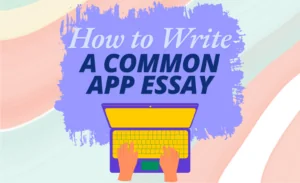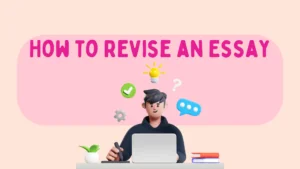An annotated bibliography is a list of references that includes books, articles, and documents, each accompanied by a brief descriptive paragraph. The paragraph is usually about 150 words, and is an annotation that describes and explains the reference and how it will be used. The purpose of the annotation is to inform the reader of the relevance, accuracy, and quality of the sources cited.

✅ AI Essay Writer ✅ AI Detector ✅ Plagchecker ✅ Paraphraser
✅ Summarizer ✅ Citation Generator
An annotated bibliography is prepared ahead of any major written work, such as a thesis or dissertation. It shows the details of the decisions made by a student about the works being used to support the claims, statements, and theories in new work.
Key Points to Remember
- An annotated bibliography is a valuable list that a student prepares before writing an important paper such as a dissertation or a thesis.
- An annotated bibliography must provide as much information as possible in the briefest way possible.
- Correctness and accuracy are vital.
- The relevance in context, content, authors’ authority, and date of publication are of high importance and must be considered carefully when choices are being made.
- The language used must be error-free and must be scholarly in tone.
- Grammar, punctuation, syntax, and word choice affect meaning, and must impress the examiner with the student’s skills and abilities.
- A citation style must be chosen and adhered to throughout the document.
The Process
- You need a set of specific academic skills. You need to know how to write concisely to demonstrate a point, analyze succinctly, and demonstrate your ability to carry out library research.
- Seek and write down the titles, authors, dates of publication, and other details, such as the publisher and location of books, journals, articles, websites, documents, and other material that cover relevant evidence in the form of data, quotes, substantiation, and ideas related to your topic.
- Read and review the actual material you find. Select the pieces that give you a comprehensive view of the angles of your topic. Mark, copy, or scan the material, so you can refer to it again in an accurate way. Keep an organized folder with all the work.
- Make an alphabetized list of all the pieces you have chosen, citing all details in the appropriate style. APA, MLA, or Chicago/Turabian are the most popular styles.
- For each entry, you must write a brief paragraph, called an annotation, which summarizes the central theme and scope of the book, article, thesis, or other document. It is key to include a brief passage which evaluates the authority or specialization of the author; to comment on the proposed audience or readers whom the project will address; and compare or contrast each work with another you have chosen. Finally, you must explain the context, or how each work helps to clarify, explain, or support your topic.
How to Choose the Supporting Material
Understanding your topic clearly will lead you to choose relevant books, articles, and other documents to help you elaborate on your subject. If your subject is art, for example, and your topic is “Religious Art: Byzantine Icons Found in Russia and Turkey” you must dissect the topic title for keywords. They will lead you onward as you write the annotated bibliography.
In this case, the keywords are: religious art, Byzantine, icons, Turkey, and Russia. Undertake a search for books, articles, and other material brought up when you use the keywords. Find each document and examine its usefulness. Ask yourself a set of questions:
Does this book or article explain what I need to know?
Does it have enough examples and illustrations?
Is it a popular or a scholarly publication?
Is its author an expert in the field?
Has my instructor mentioned the author?
Does the piece go into enough detail?
Is the publication too old to be of any use to the project I have in mind?
Will I find support for the points I want to make?
A successful piece of documentation will help a student make a point and demonstrate it fully. Remember that each work chosen for the annotated bibliography must be a scholarly piece, and not taken from popular literature or websites considered lightweight or merely entertaining rather than academic.
Organizing Your Material
Keeping a card index, especially if you are working towards a dissertation or thesis, is vital. You can also use a spreadsheet or database.
Whatever system you devise, remember that being tidy and methodical will help you remain in control of the whole project.
How to Write the Paragraphs for an Annotated Bibliography
- Use an academic tone and style of writing at all times. It is prudent to follow the style of each work you use.
- Always be brief—do not use extra adverbs and adjectives to stress or decorate your writing. Do not write long sentences—a short sentence that is to the point and clearly written is the most accurate.
- Do not stray from the salient point of your project.
- It is better to write as much as you think is important at first. Then edit each entry to about 150 words. The extra material can be kept with your research materials, and could be used later on, when you are writing the research document.
- Choose the correct format for citation, then follow the style meticulously.
Now that you have acquainted yourself with the basic annotated bibliography writing tips and rules, you can check out our annotated bibliography samples to link theory with practice.
Follow us on Reddit for more insights and updates.





Comments (0)
Welcome to A*Help comments!
We’re all about debate and discussion at A*Help.
We value the diverse opinions of users, so you may find points of view that you don’t agree with. And that’s cool. However, there are certain things we’re not OK with: attempts to manipulate our data in any way, for example, or the posting of discriminative, offensive, hateful, or disparaging material.